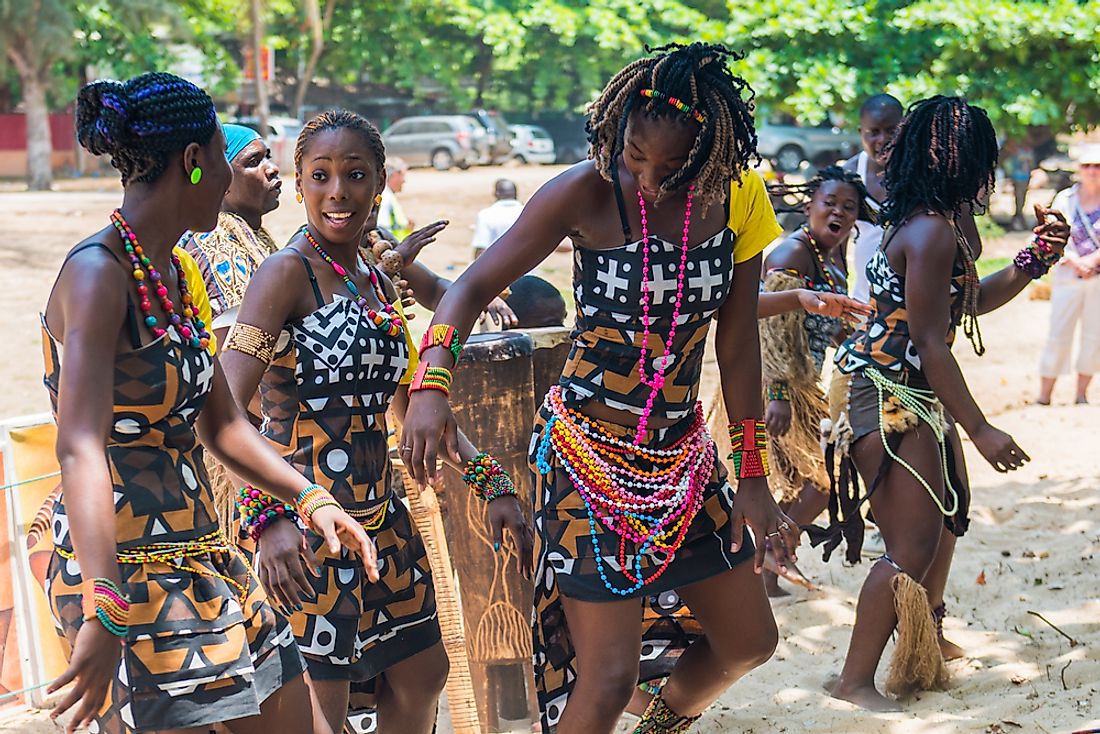Largest Ethnic Groups In Angola

Angola is a South African nation bordered by the Atlantic Ocean, Namibia, the Democratic Republic of the Congo, and Zambia. It has a population of approximately 24.3 million that is made up of many diverse ethnicities. These groups include native tribes, immigrants, and refugees. This article takes a look at some of the largest ethnic groups living in Angola today, using data from the CIA World Factbook.
Ovimbundu
The Ovimbundu ethnic group mainly resides in the central coastal region of Angola, and its people are descendants of Bantu tribes that migrated into the area over the course of the last thousand years. Once they settled in this area, the Ovimbundu developed complex agricultural and animal husbandry practices. During Portuguese colonial times, they developed a trade system between the Portuguese-ruled coastal towns and tribes living further inland. This trade influenced their agricultural practices until they focused solely on cash crops. Their land was later taken by European settlers and the Ovimbundu eventually formed an anti-colonialist group that fought for independence and today is a significant political party. The government, with the help of nongovernmental organizations (NGOs) and Ovimbundu people, is currently working to rebuild Ovimbundu-controlled cities that were destroyed during the civil war. Today, this group makes up 37% of the population.
Ambundu
The Ambundu are represented by 25% of the population of Angola, and are also descended from Bantu tribes. Historically, they occupy the northwest region of Angola. Although the Ambundu speak the official language, Portuguese, they also speak their native language, Kimbundu. When they came to the area, they build permanent communities and began trading with local tribes. Although they share some similarities with the Ovimbundu group, the Ambundu is distinct in that they traditionally practice matrilineal land inheritance. In the 1550’s, the Ambundu won independence from the king of the Kongo tribe, also known as Bakongo ethnic group.
Bakongo
Similar to the previously mentioned tribes, the Bakongo descended from Bantu tribal immigrants as well. This name is used to identify all individuals who speak the Kikongo language and their presence stretches beyond the present-day borders of Angola. They once ruled over various Kingdoms throughout Africa. The kingdom that Angola once belonged to was the Kingdom of Kongo. Once independent, it became a vassal state of the Portuguese colony between 1891 and 1914. During this time, the kingdom and the colony were in continuous conflict. In its final year, the Portuguese removed its king and consolidated the territory into the colony of Angola. During the 1950’s, the Bakongo regained power and joined other tribes to form a political party against the Portuguese colony. Together, they helped to push out the Portuguese rulers and win independence in 1975.
Other Ethnic Groups
Just over one-fifth of the population, 21%, identify as of some other African ethnicity, which means they either come from smaller, minority tribes native to the Angolan nation or they are immigrants from other African countries. Multiracial individuals make up 2% of the population, and white Europeans, mainly those who stayed in Angola after the end of the colonial period and their offspring, constitute another 2% of the country’s inhabitants.
Largest Ethnic Groups In Angola
| Rank | Ethnic Group | Share of Angolan Population Today |
|---|---|---|
| 1 | Ovimbundu | 37% |
| 2 | Ambundu | 25% |
| 3 | Other African Ethnicity | 21% |
| 4 | Bakongo | 13% |
| 5 | Mestizo and/or Multiracial | 2% |
| 6 | White European | 2% |







